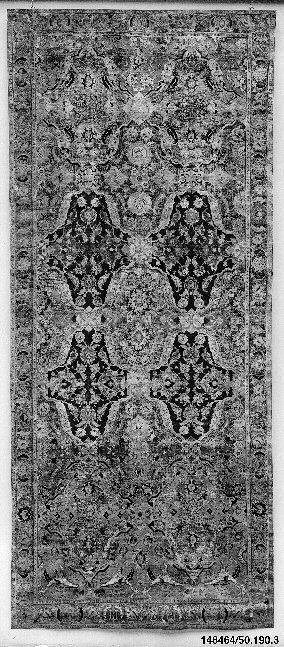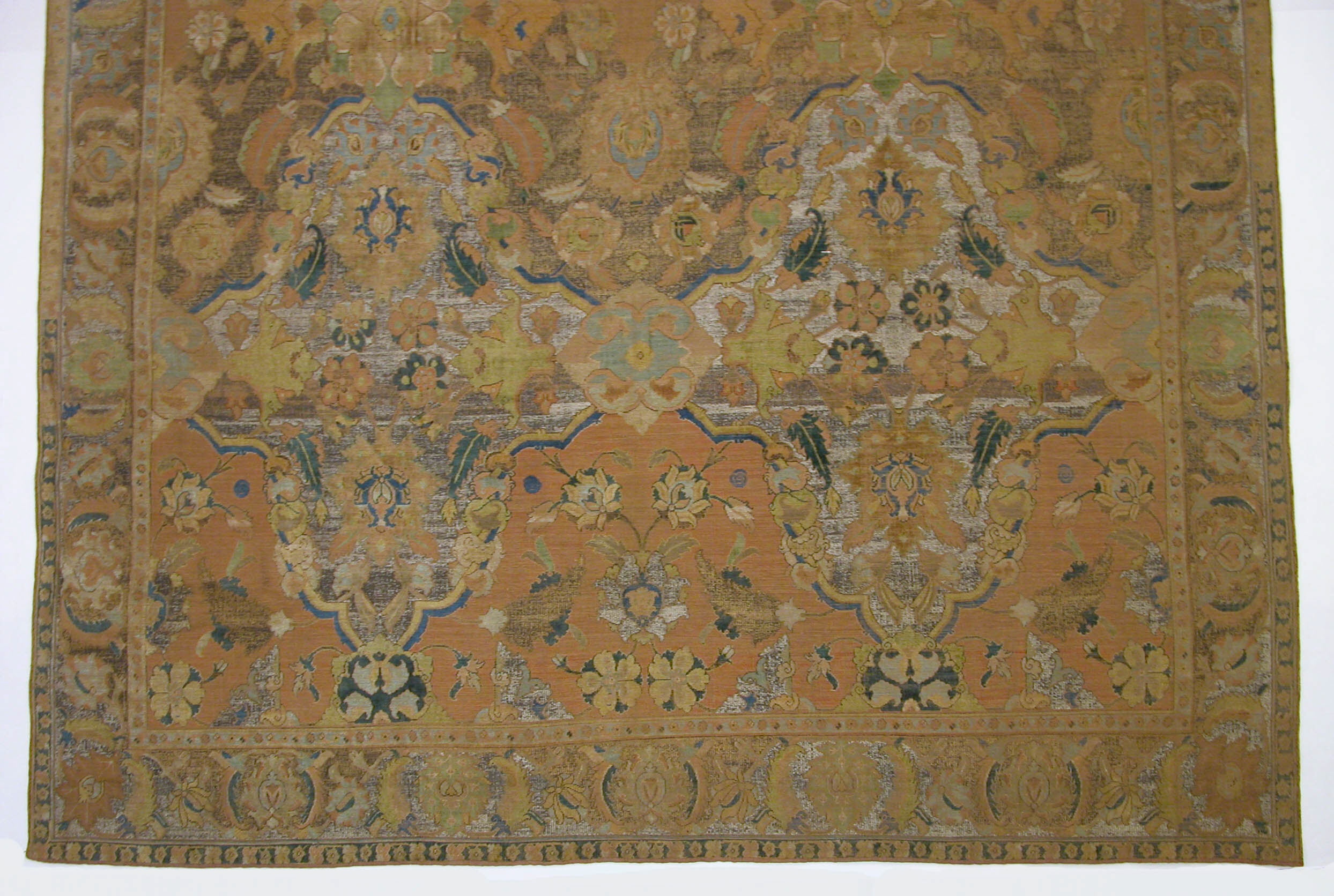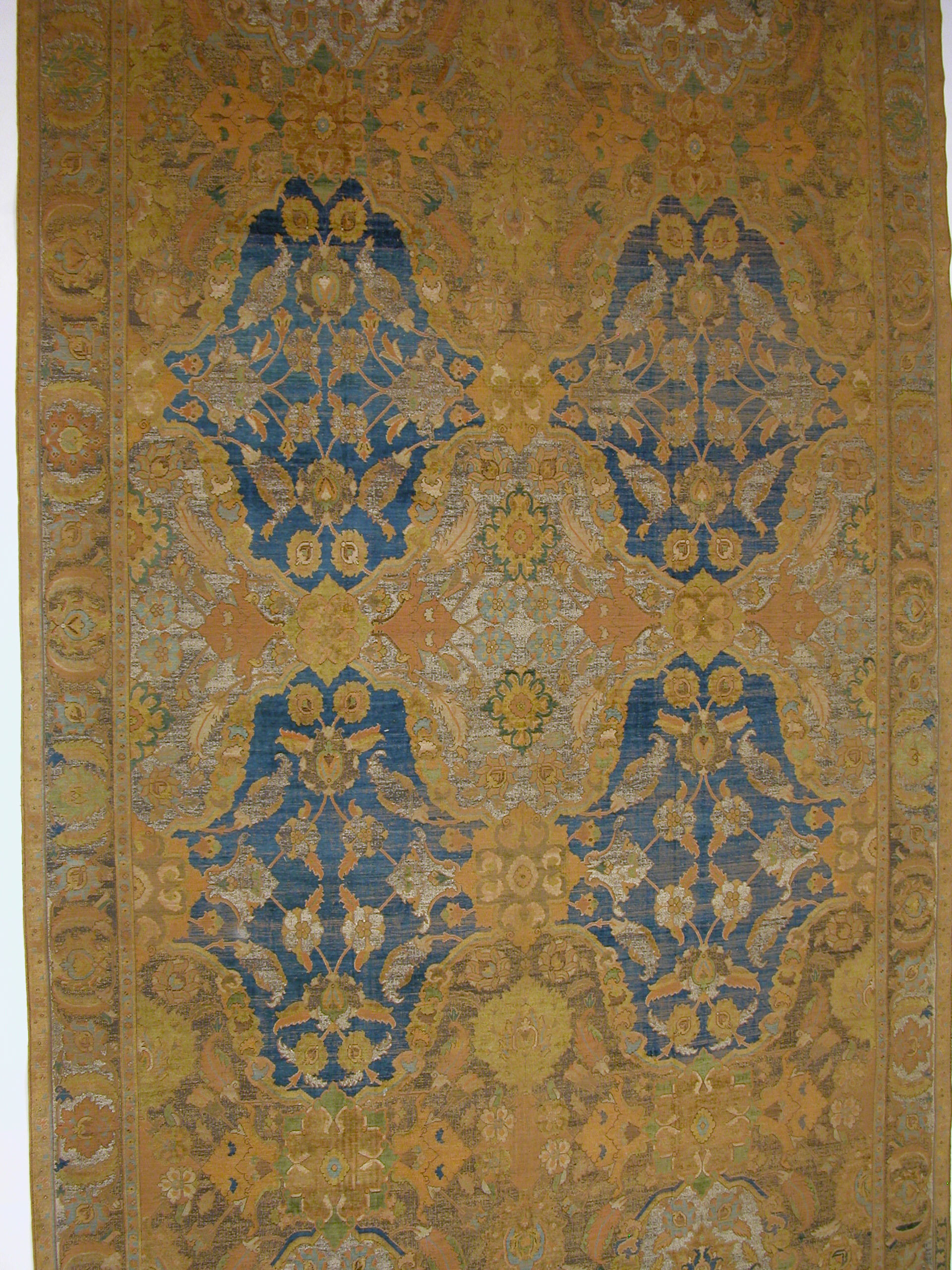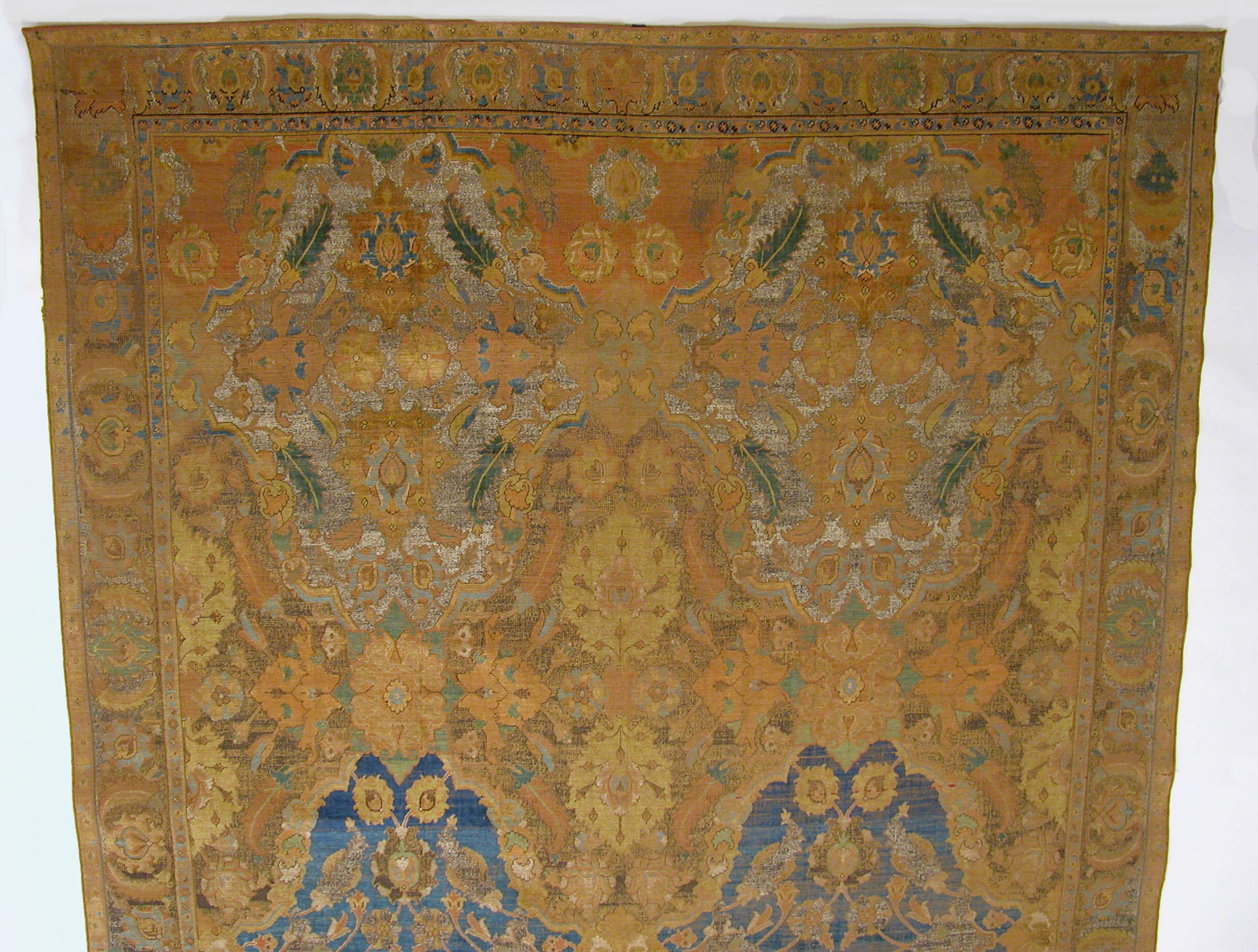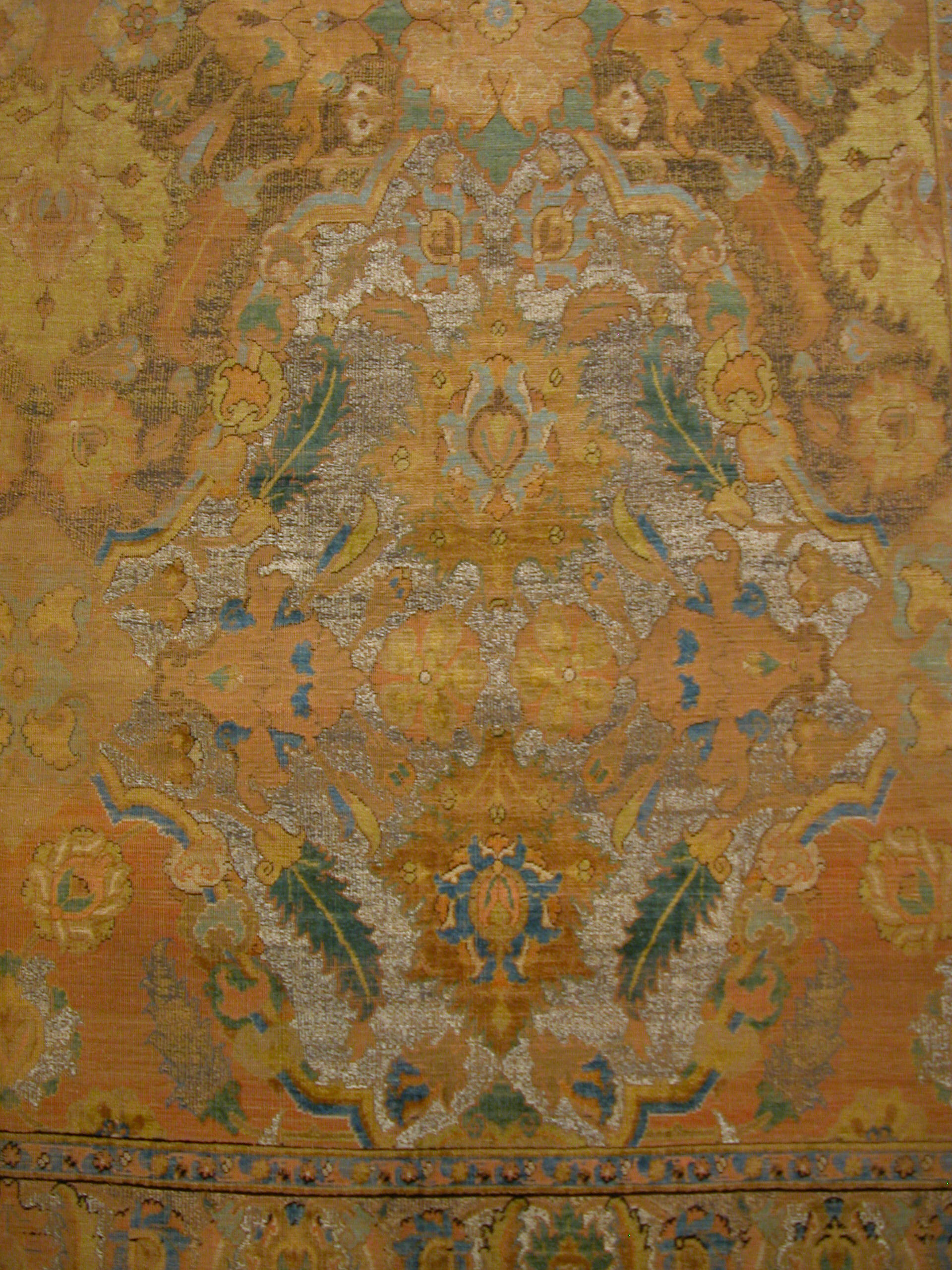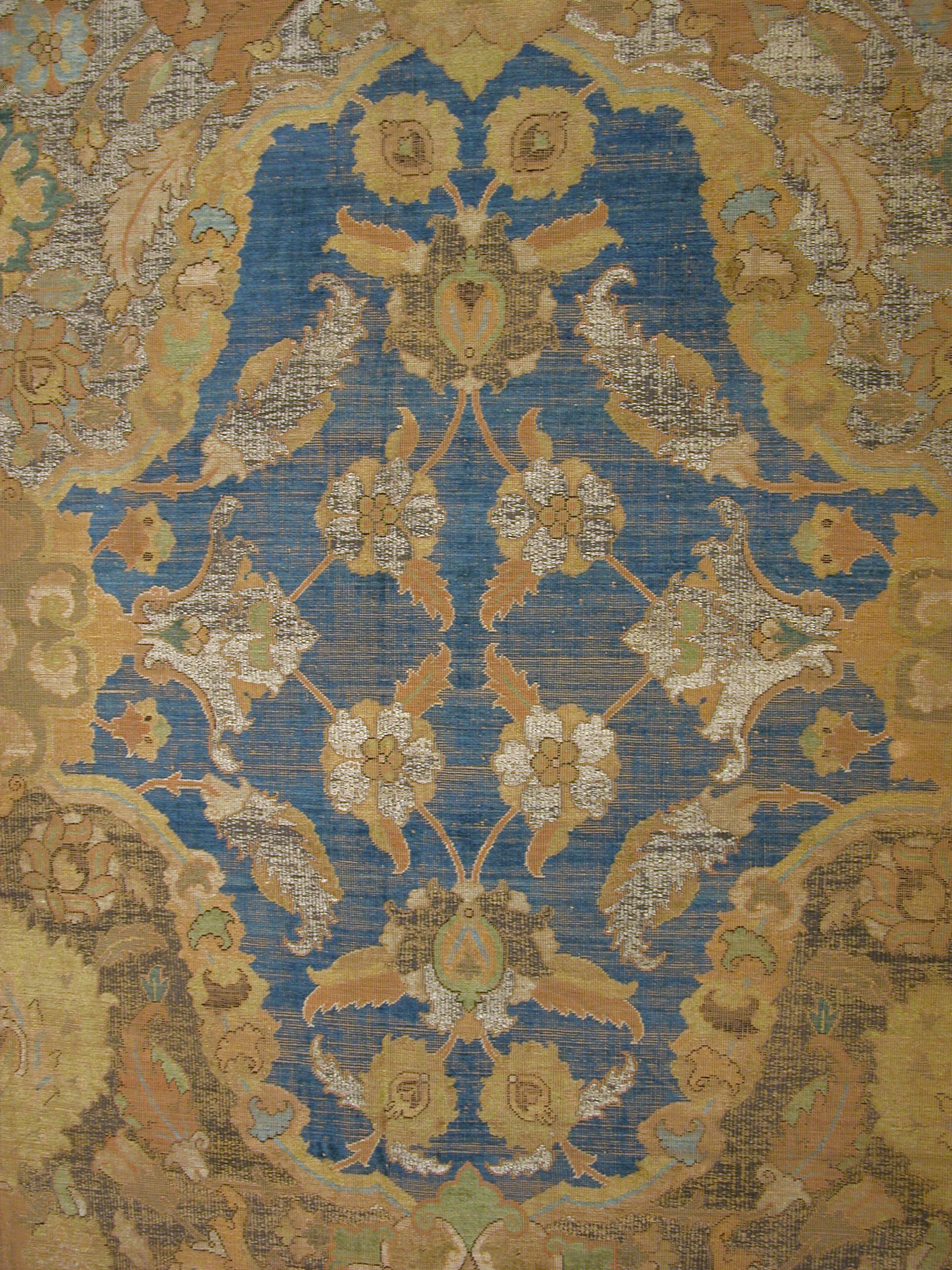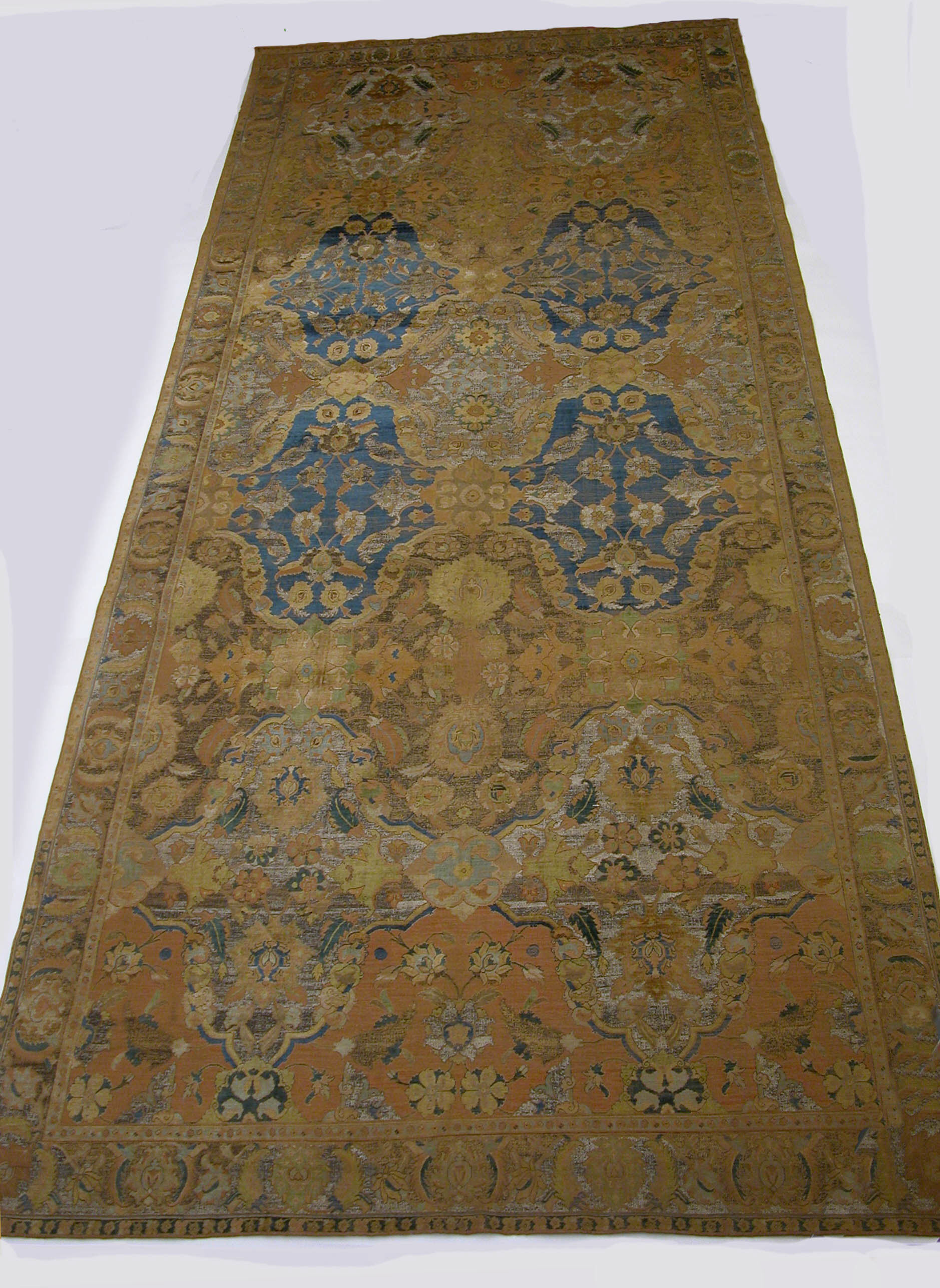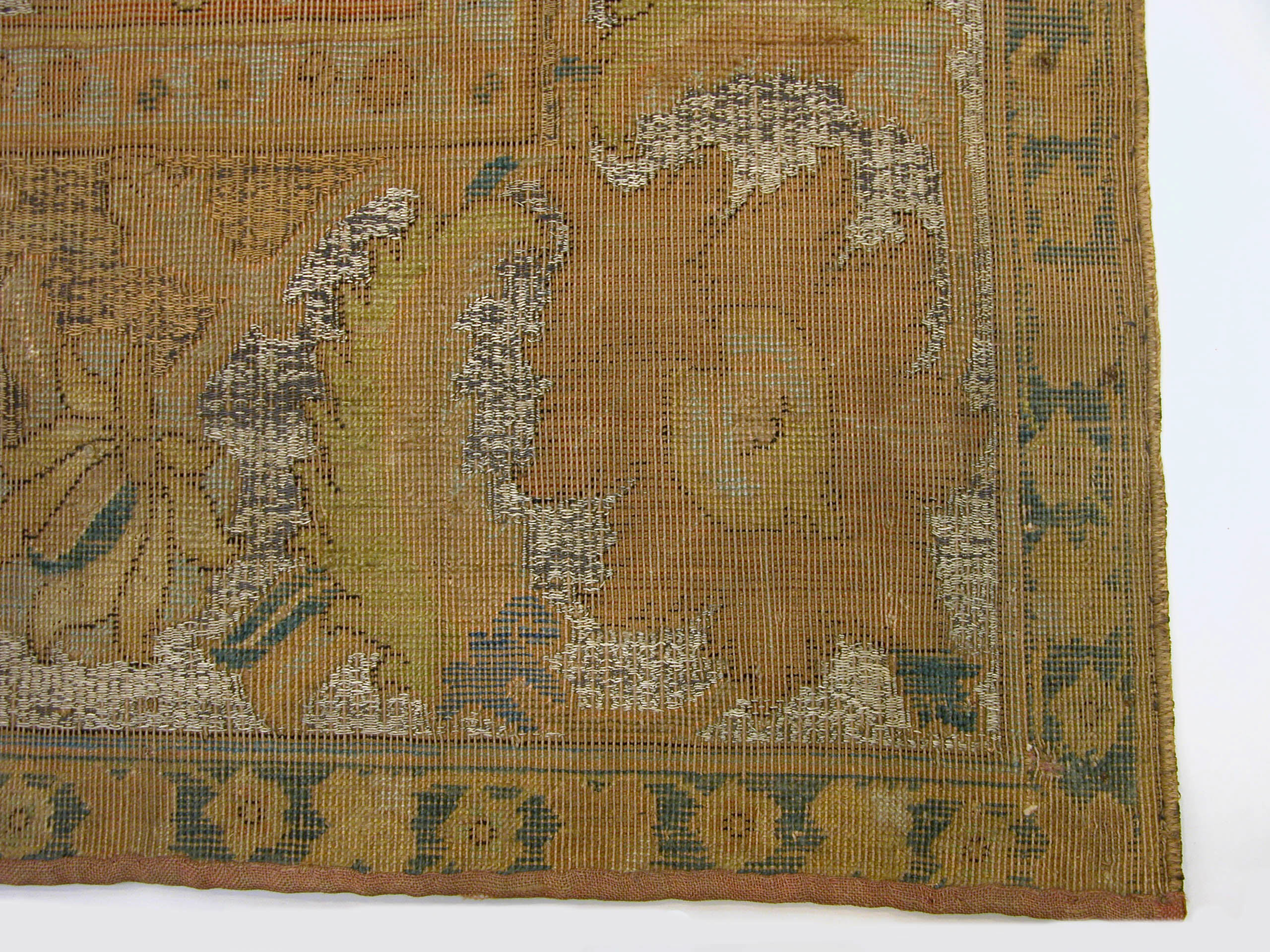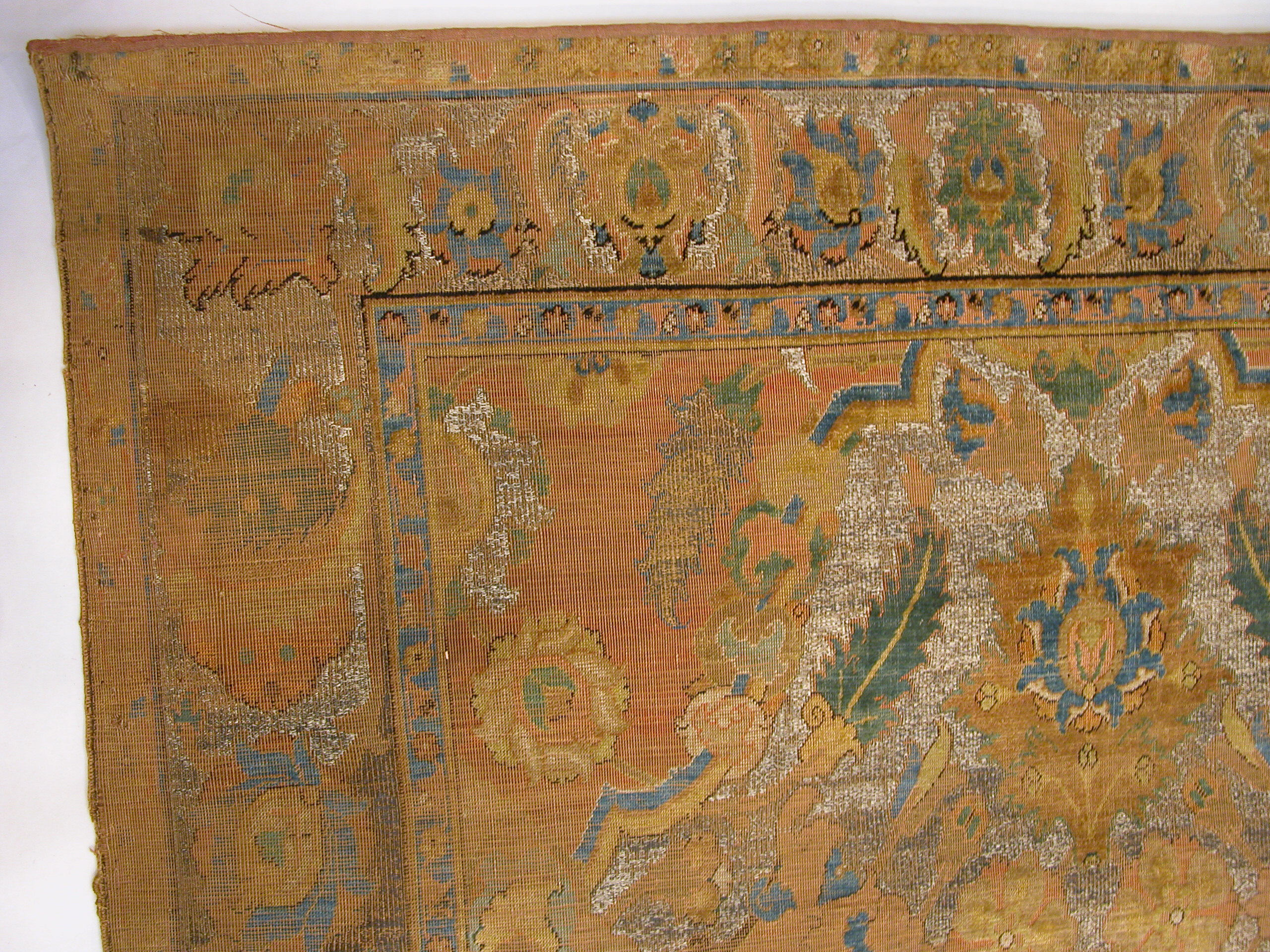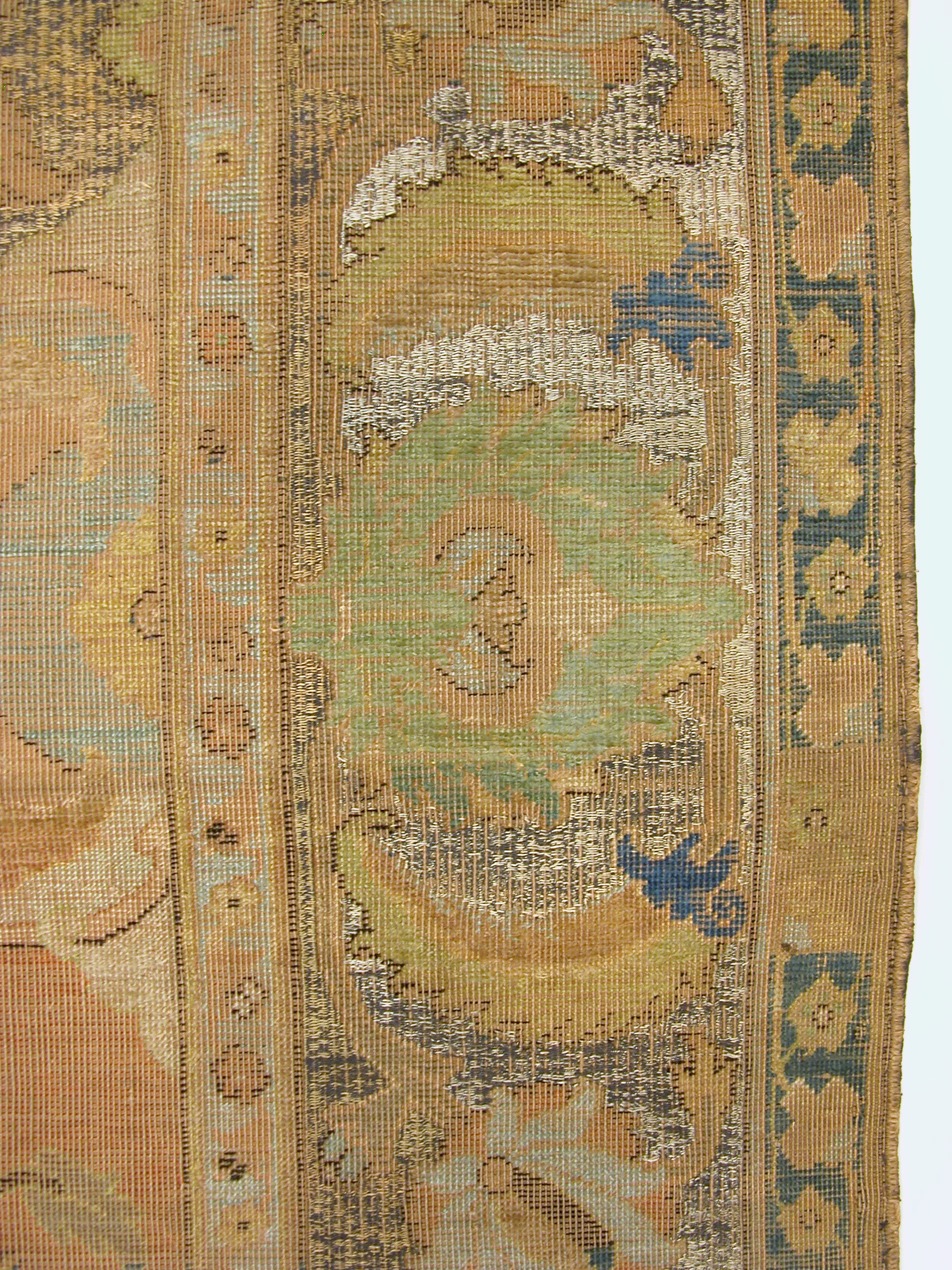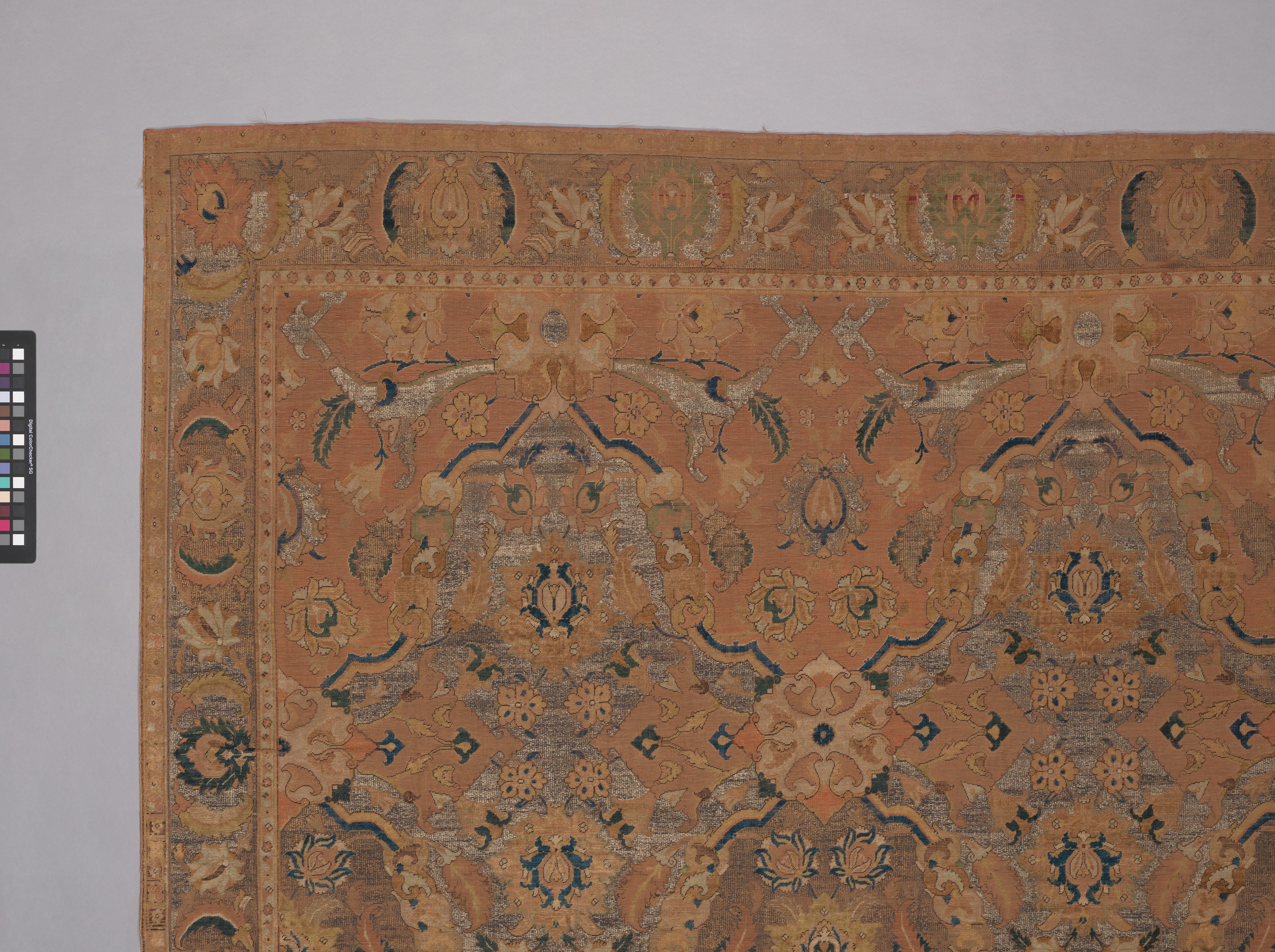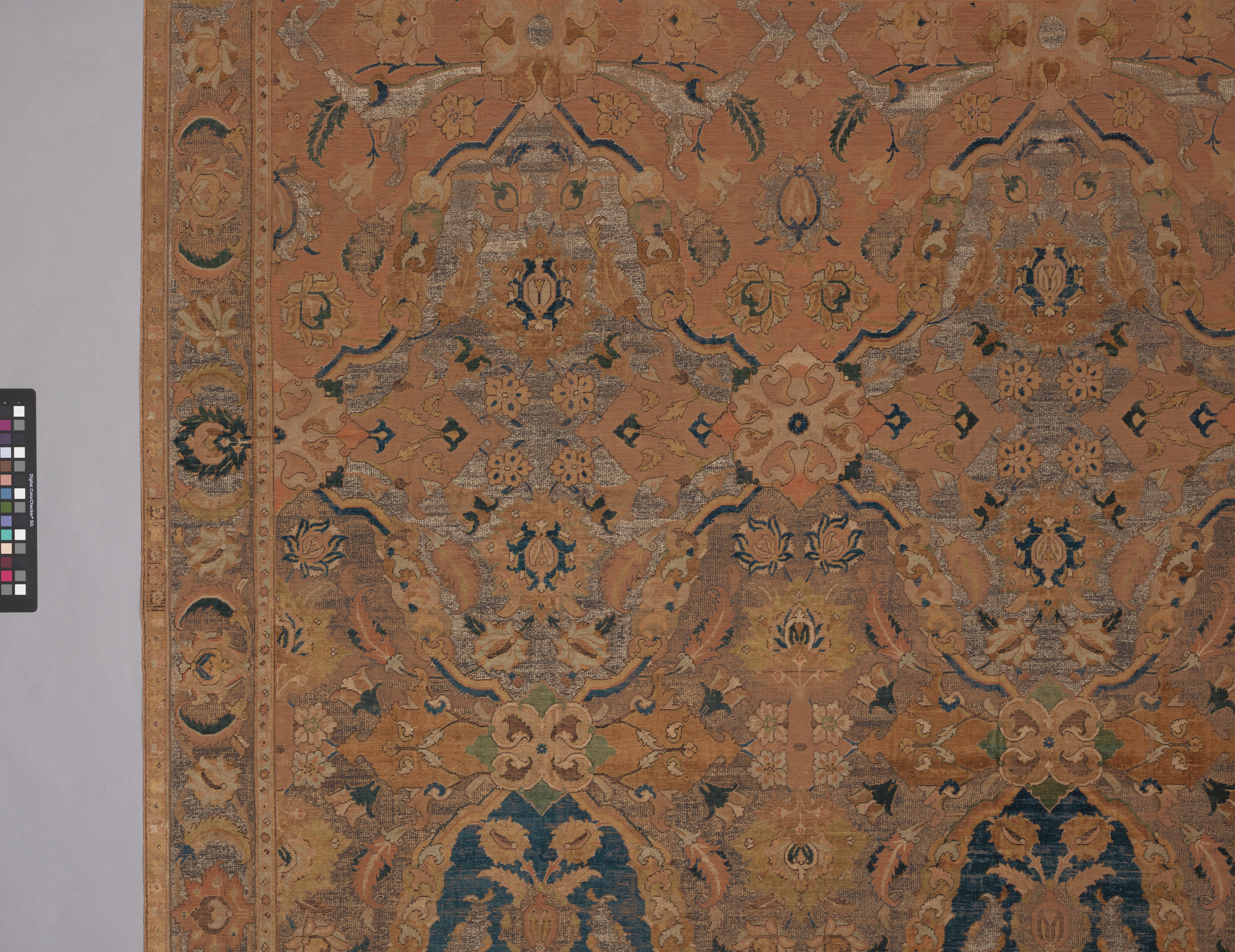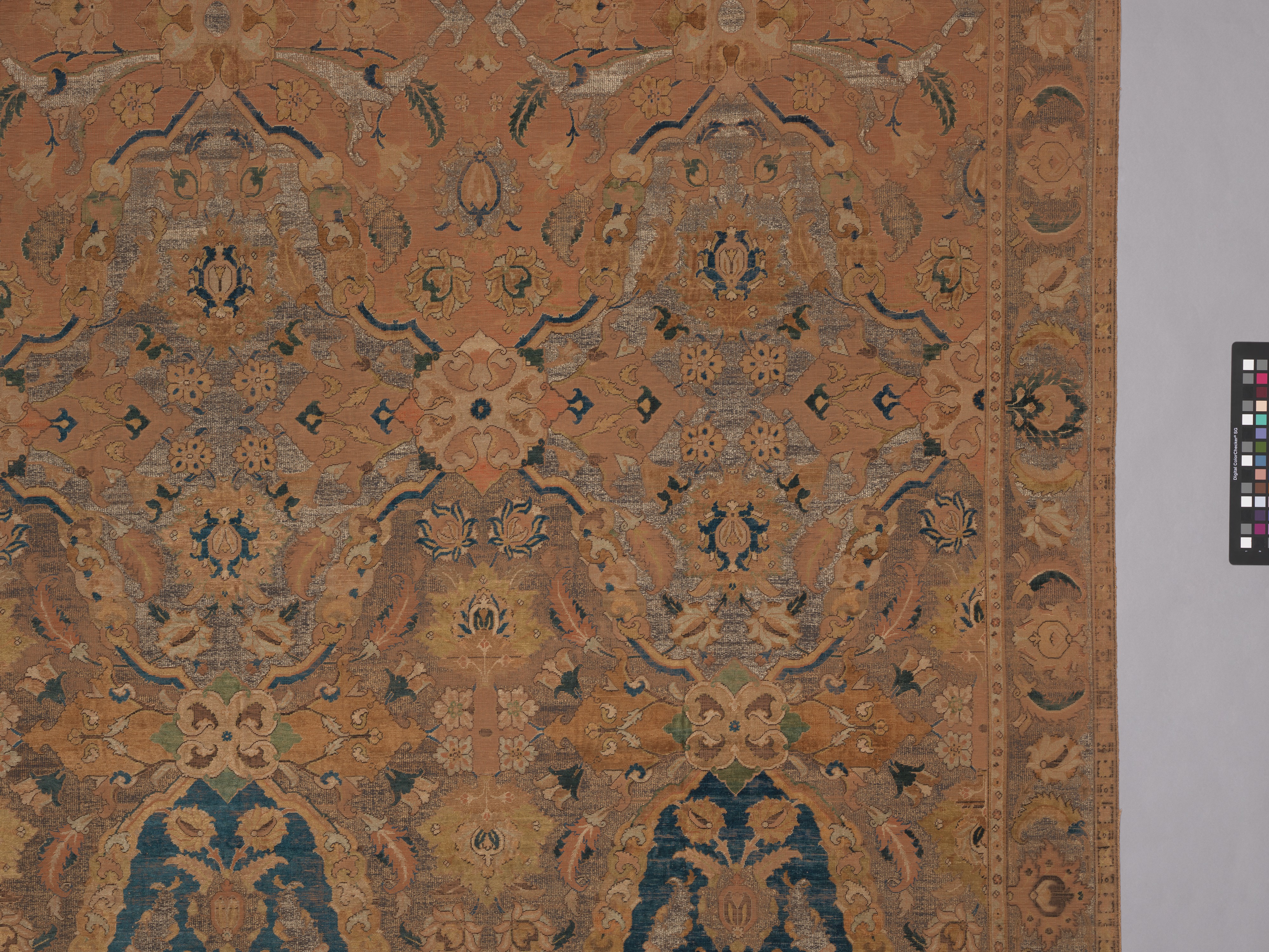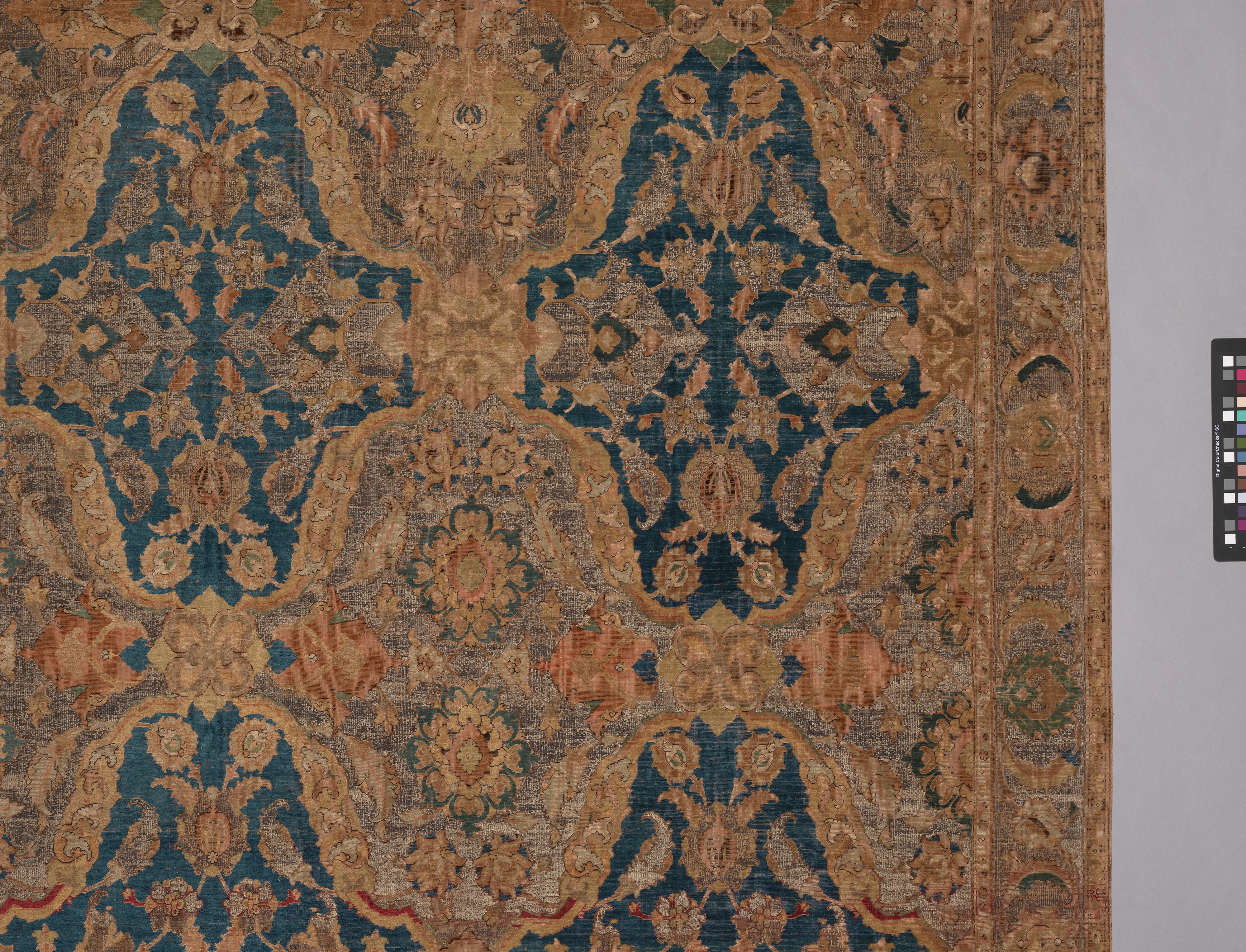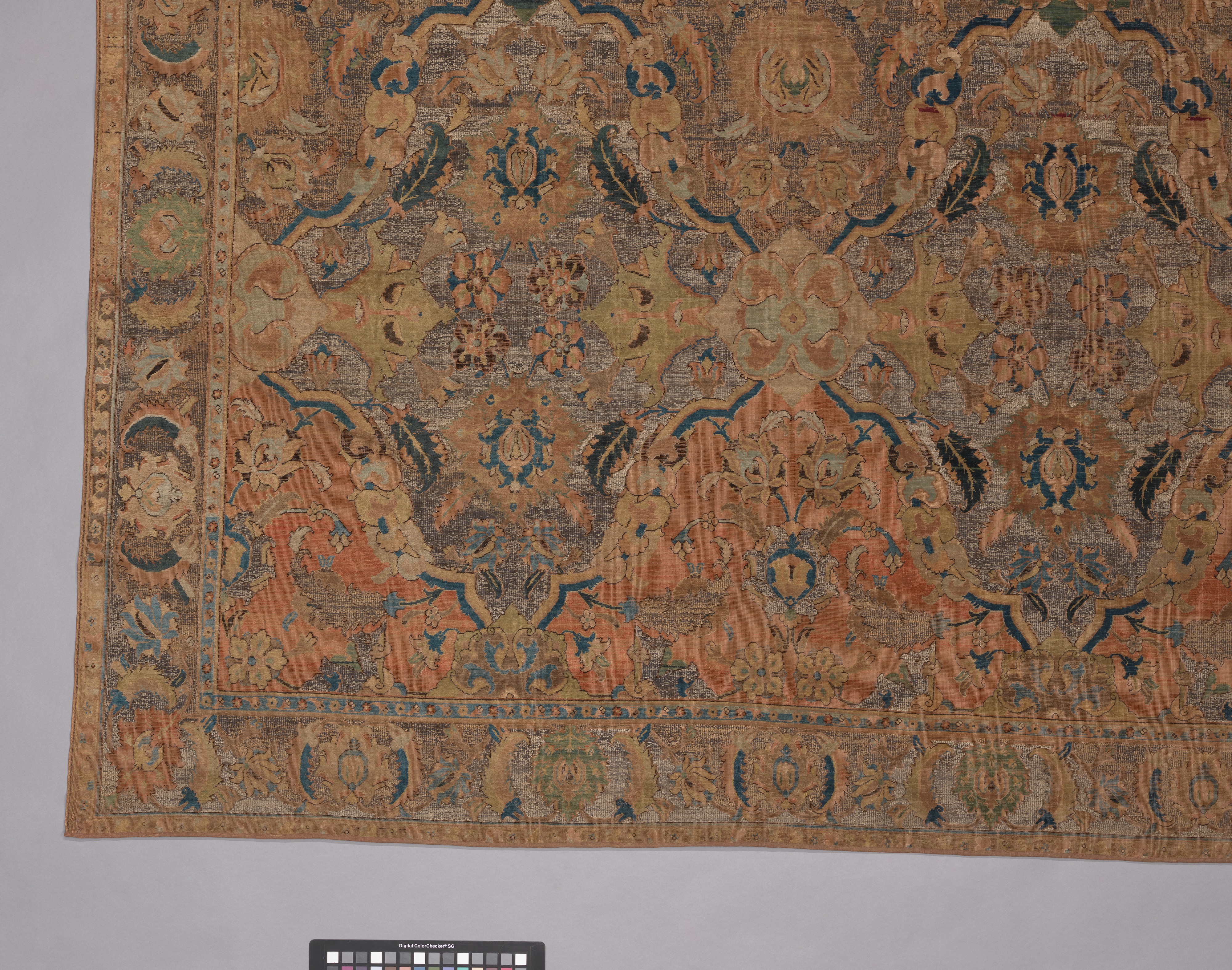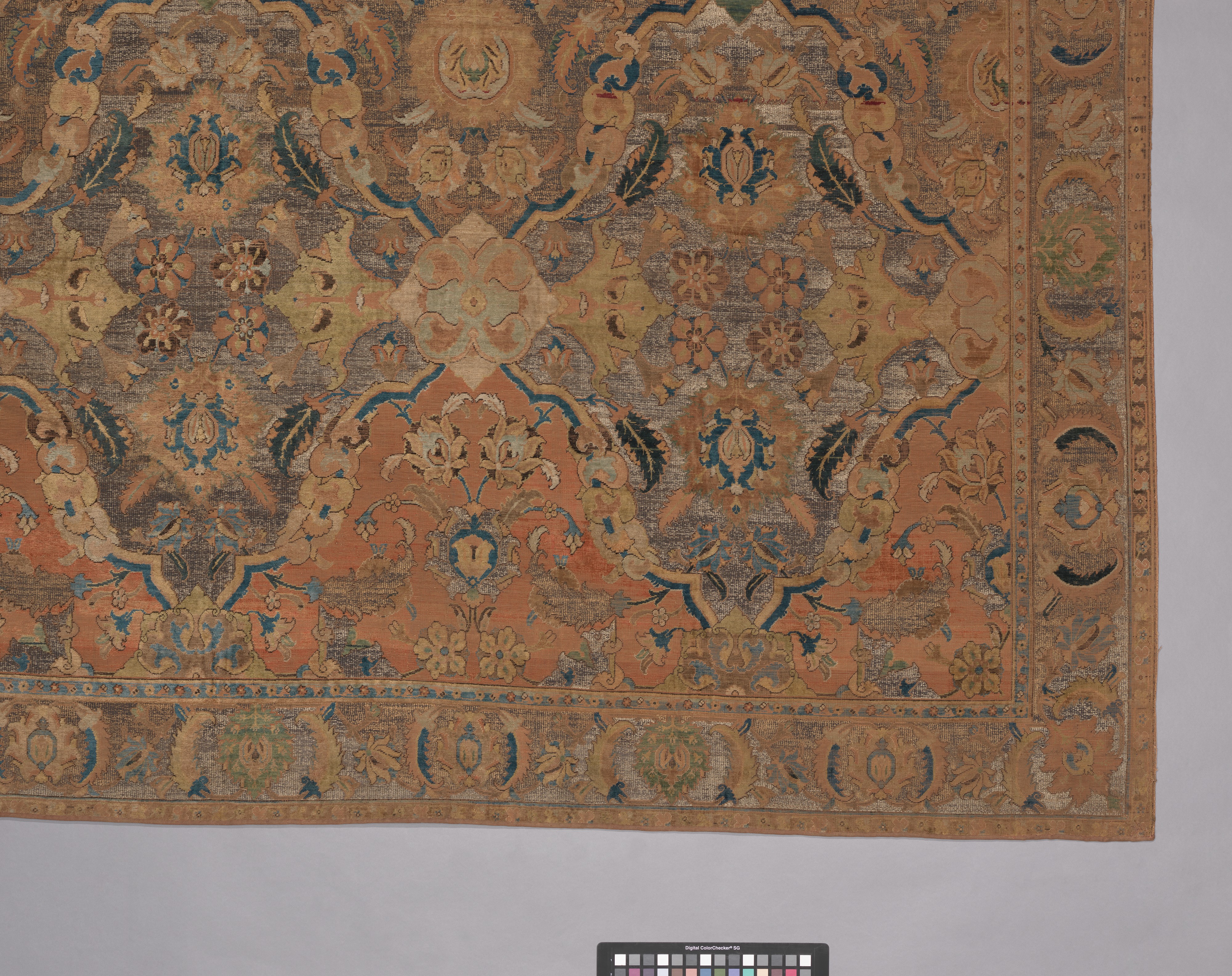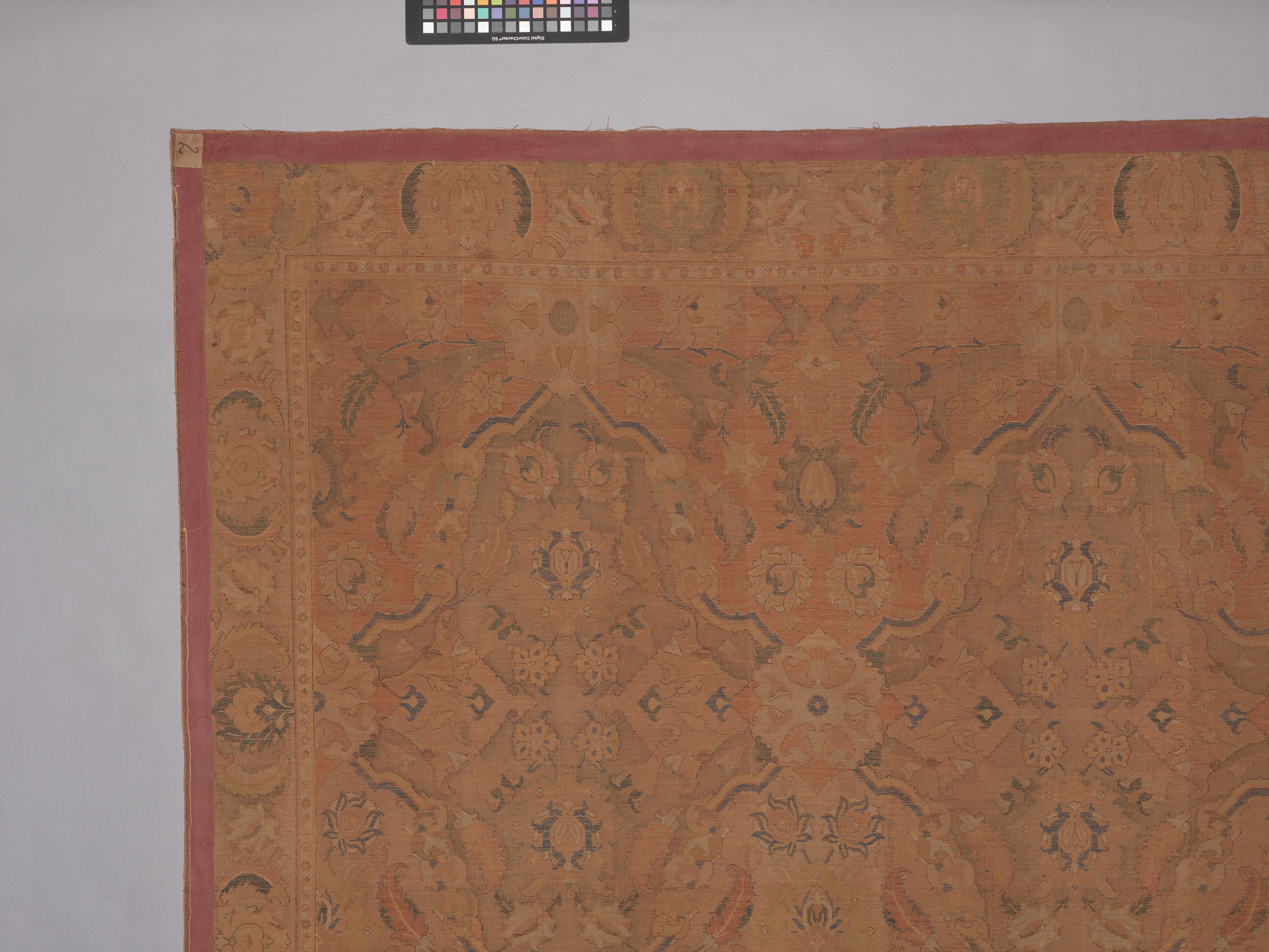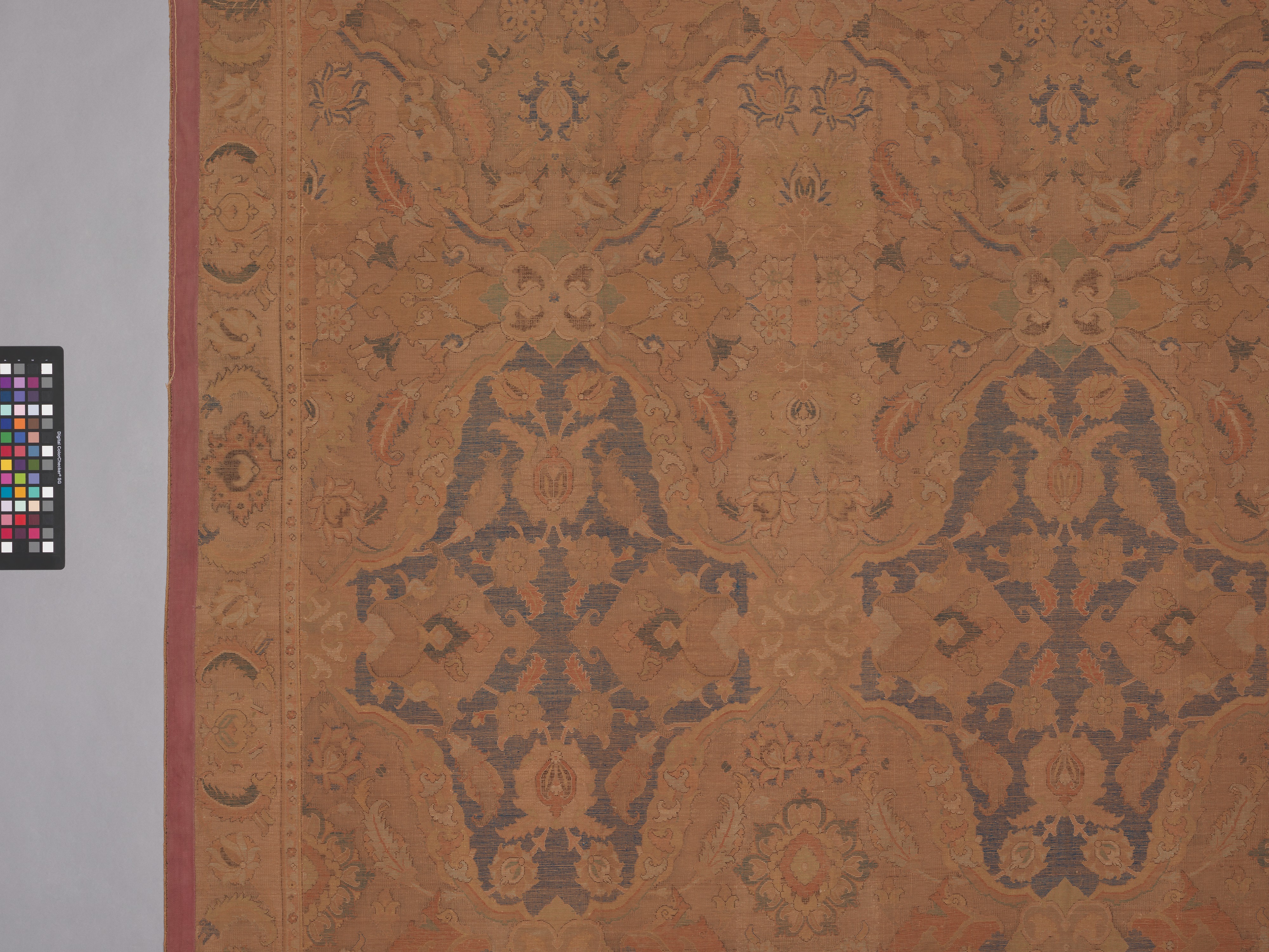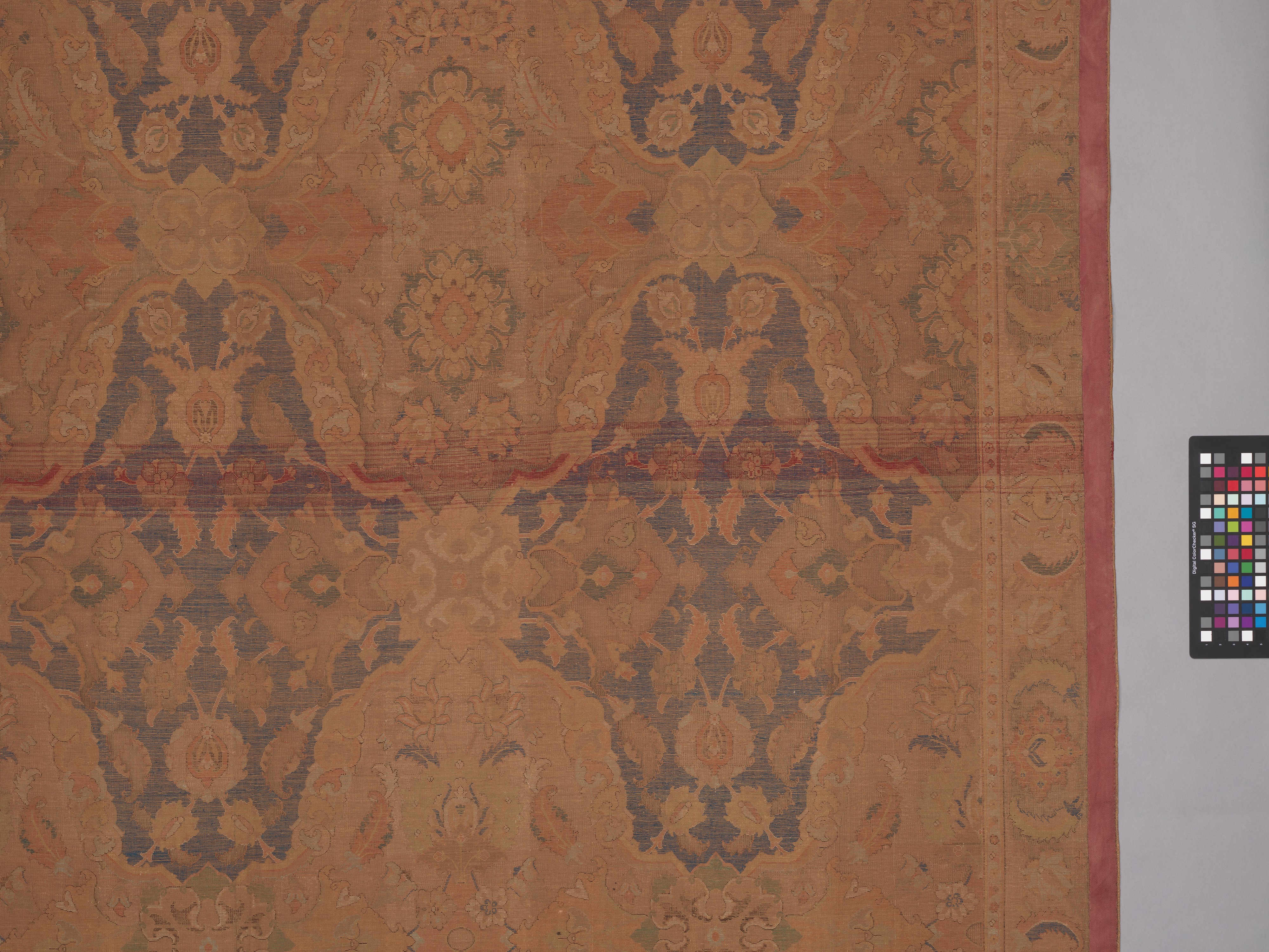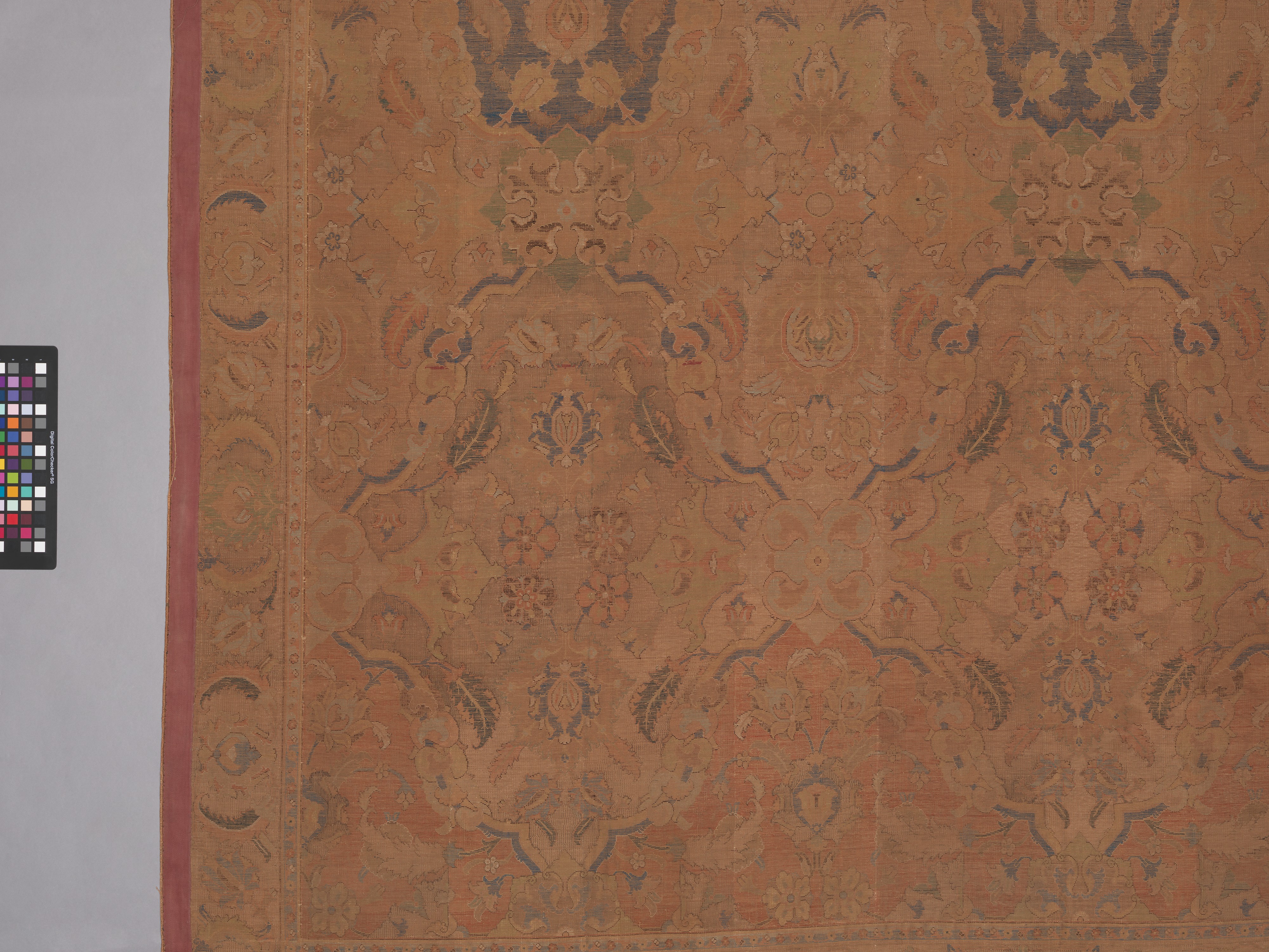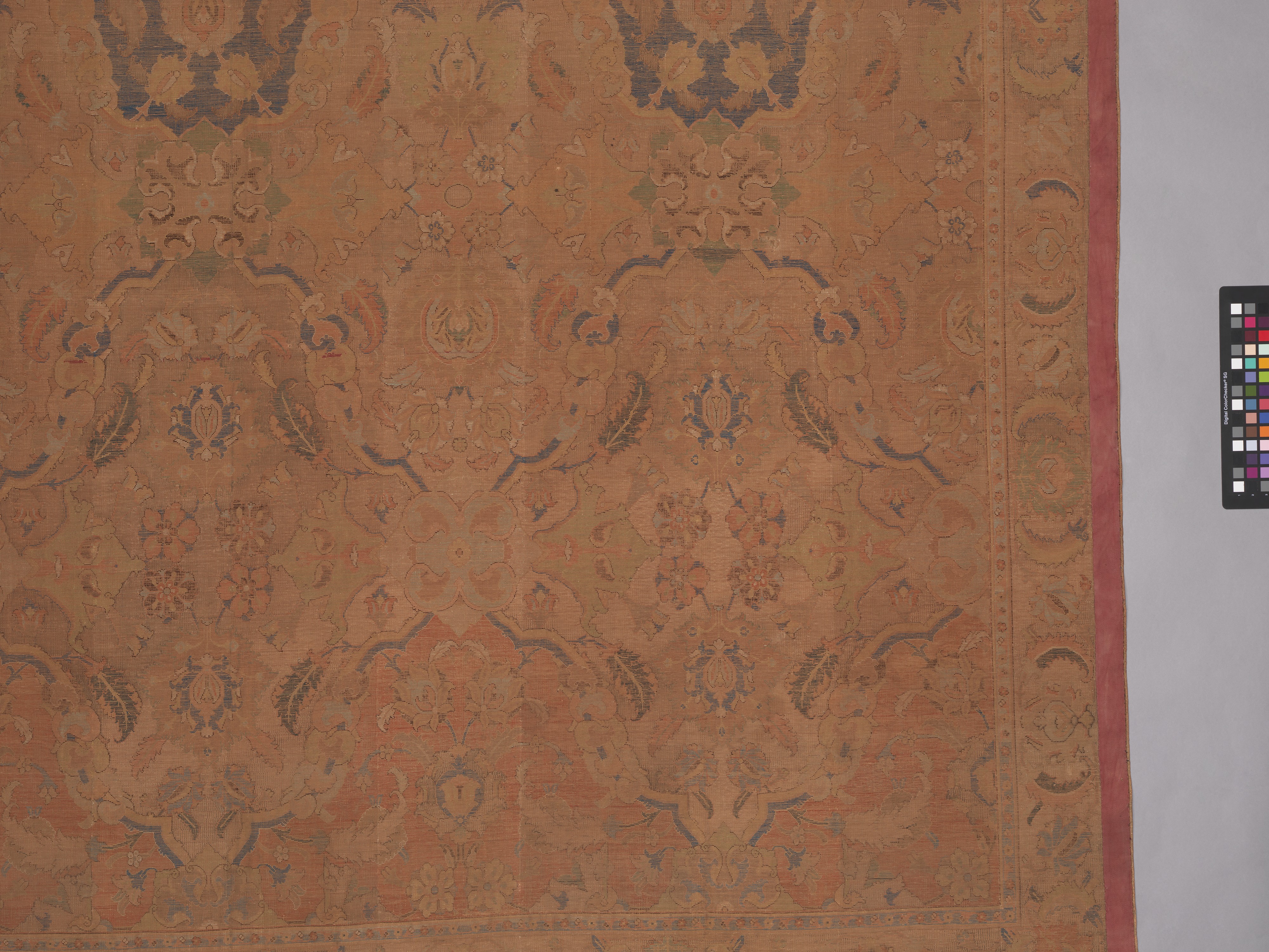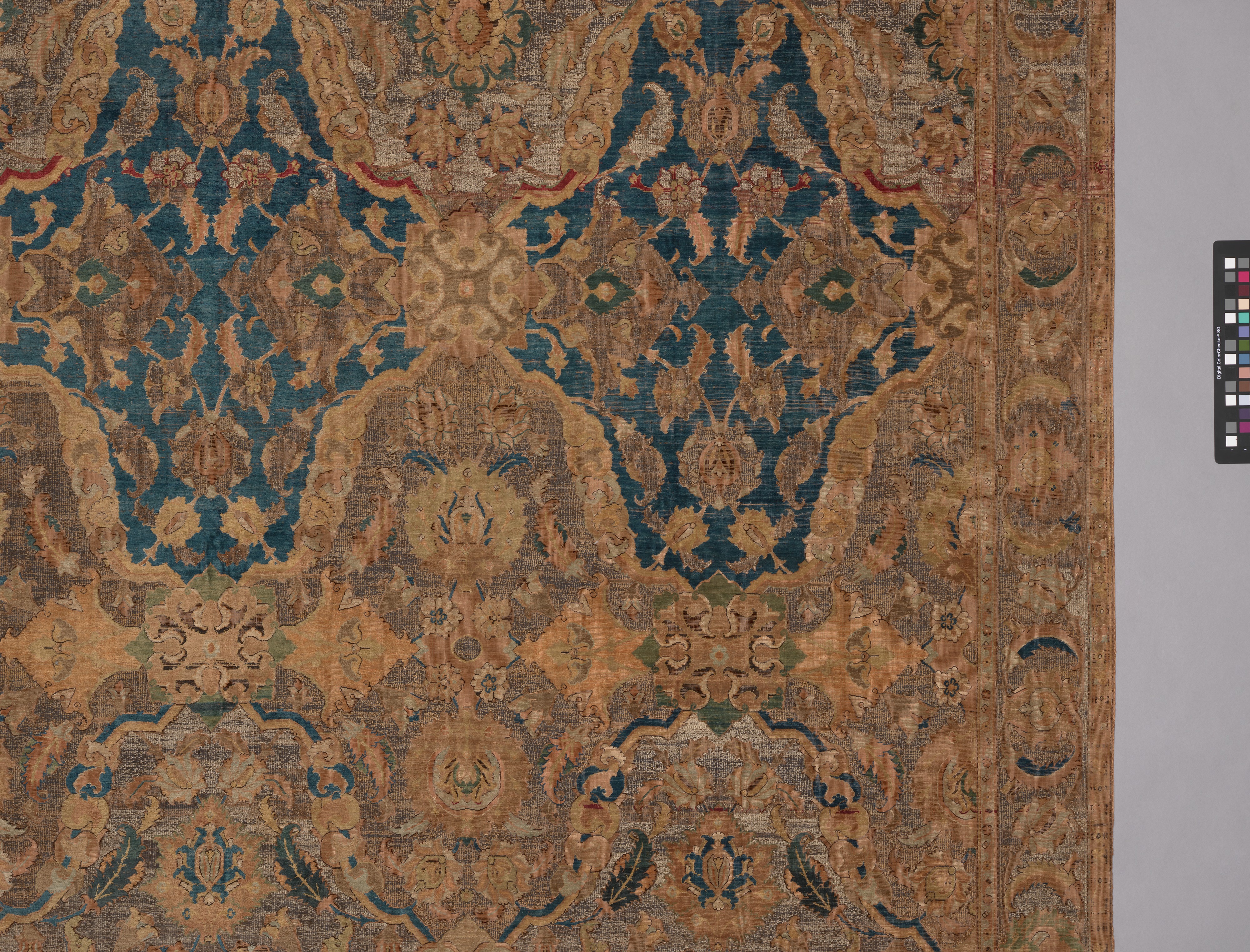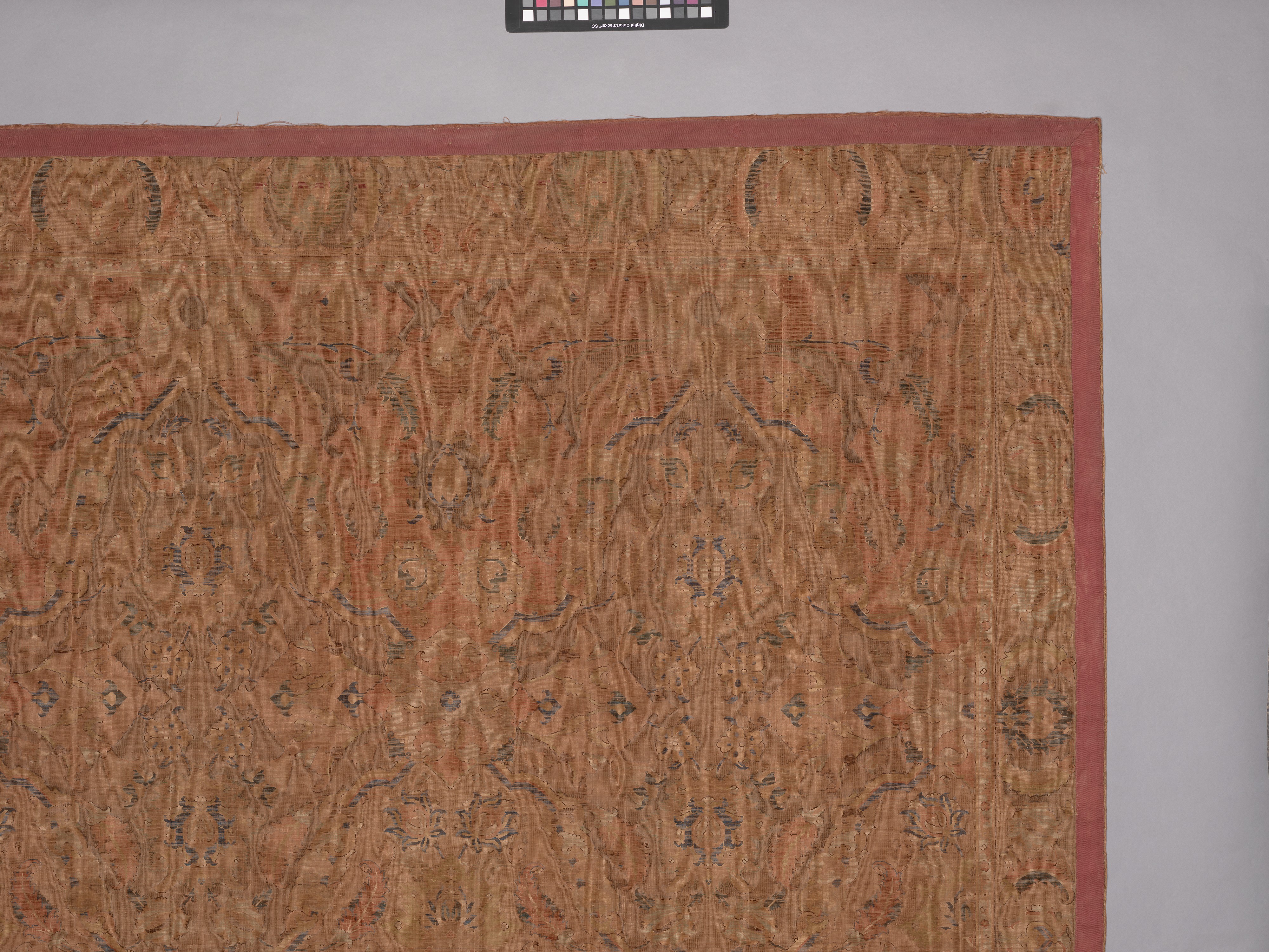'Polonaise' Carpet
The field of this silk carpet is filled with flowers, leaves, and scrolling vines—all typical of Persian carpet design of this period, when the hunting and animal scenes popular the previous century fell out of favor. Polonaise carpets like this one are noted for their extensive use of silk and metal-wrapped silk thread. The somewhat muted colors are due to the silk pile; though valued for its strength and softness, silk does not hold dye as well as wool and its color quickly fades. Polonaise carpets, which were often produced in matching pairs, were created both for the local Iranian market and for presentation and sale to Europeans—including the Polish nobility, a fact which accounts for this type’s name.
Due to rights restrictions, this image cannot be enlarged, viewed at full screen, or downloaded.
This artwork is meant to be viewed from right to left. Scroll left to view more.


